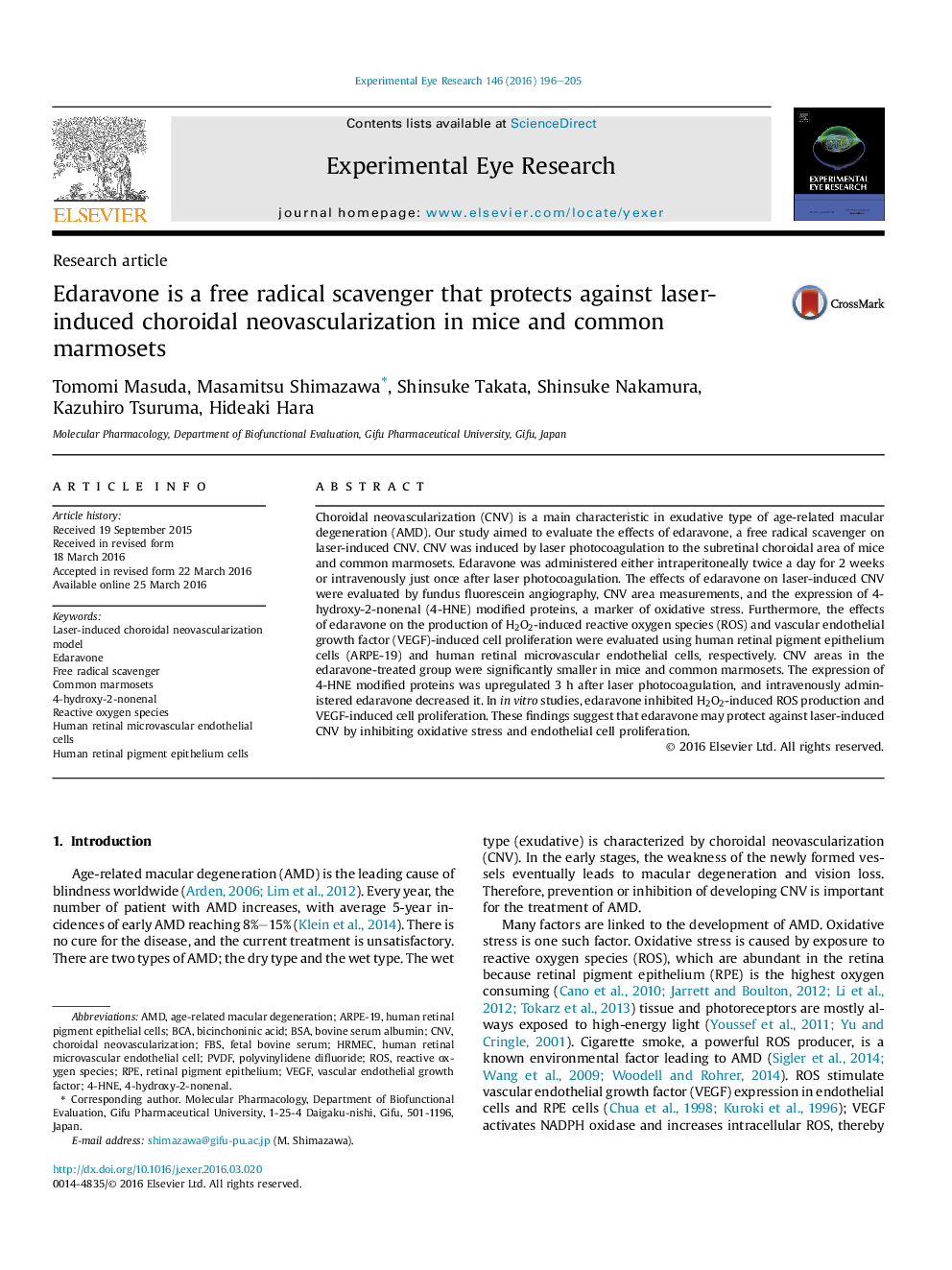| Article ID | Journal | Published Year | Pages | File Type |
|---|---|---|---|---|
| 6196294 | Experimental Eye Research | 2016 | 10 Pages |
â¢Edaravone reduced laser-induced choroidal neovascularization (CNV) size in mice.â¢Edaravone suppressed oxidative stress by scavenging reactive oxygen species.â¢Edaravone was effective against CNV not only in mice but also in common marmosets.â¢Edaravone may be effective against exudative AMD which is characterized by CNV.
Choroidal neovascularization (CNV) is a main characteristic in exudative type of age-related macular degeneration (AMD). Our study aimed to evaluate the effects of edaravone, a free radical scavenger on laser-induced CNV. CNV was induced by laser photocoagulation to the subretinal choroidal area of mice and common marmosets. Edaravone was administered either intraperitoneally twice a day for 2 weeks or intravenously just once after laser photocoagulation. The effects of edaravone on laser-induced CNV were evaluated by fundus fluorescein angiography, CNV area measurements, and the expression of 4-hydroxy-2-nonenal (4-HNE) modified proteins, a marker of oxidative stress. Furthermore, the effects of edaravone on the production of H2O2-induced reactive oxygen species (ROS) and vascular endothelial growth factor (VEGF)-induced cell proliferation were evaluated using human retinal pigment epithelium cells (ARPE-19) and human retinal microvascular endothelial cells, respectively. CNV areas in the edaravone-treated group were significantly smaller in mice and common marmosets. The expression of 4-HNE modified proteins was upregulated 3 h after laser photocoagulation, and intravenously administered edaravone decreased it. In in vitro studies, edaravone inhibited H2O2-induced ROS production and VEGF-induced cell proliferation. These findings suggest that edaravone may protect against laser-induced CNV by inhibiting oxidative stress and endothelial cell proliferation.
